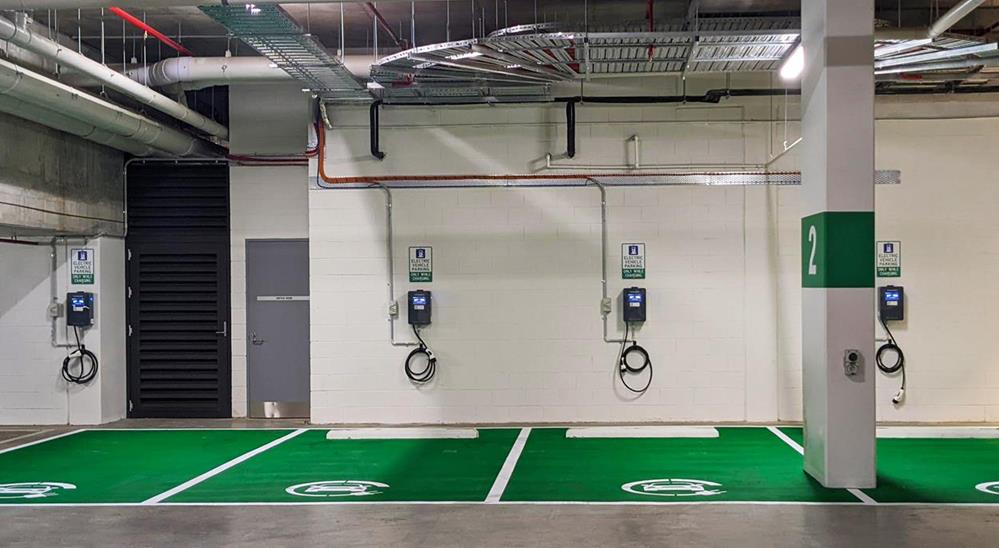How to Offer EV Charging at the Workplace

The EV market in Australia is growing rapidly, with more people switching to EVs. Workplaces should now consider installing EV charging stations for their employees to boost engagement and attract more talents to the business. However, electric mobility is a new concept for many companies, so planning and implementation can be challenging. This article will guide you through some of the common workplace options.
Workplace EV Charging
Two leading EV charging approaches are suitable for the workplace depending on your business model, needs and goals. The first option is to offer EV charging as an incentive to support your employees. Under this model, employees should be able to charge their vehicles at work for free.
Another alternative option is to offer paid-to-charge, meaning the users pay to charge their vehicles. With this option, employers can set up fees and tariffs for different types of users using smart charging software. In this case, employees could benefit from discounted rates while customers and visitors could pay full price. Companies can generate additional revenue from this method and create charging infrastructure for visitors and customers.
While each model has its benefits and drawbacks, choosing which is suitable for your organisation will depend on several factors.
1. Offering EV charging as a benefit to employees
Employee benefits are crucial to help companies stand out from the crowd and attract and retain top talents. Offering EV charging as a benefit is not the sole employee benefit but something that your workers will appreciate, especially with EV adoption increasing in the last few years and is considered as part of the solution to fight against climate change.
Optus Australia has made a good example of providing EV charging as a benefit for their employees. The company has installed and introduced a new attractive charging option for their employees who drive electric vehicles (EVs) at their campus in Macquarie Park.
“Having EV charging stations at your work or within your employee or visitor parking area is a great way to ensure employees are given the opportunity to play their part in your company’s sustainability goals. It’s a worthy investment that is also attractive to existing and potential employees who may be wanting to make choices around their careers and which companies align with their personal values on environmental sustainability.” – Catherine Alekna – Sustainable Transport Coordinator.
2. Use EV charging at the workplace as a service to generate revenue.
Another approach to providing EV charging at the workplace is to offer charging as a paid service and open the charging stations for third-party use, such as visitors and customers. It allows the company to create an additional revenue stream while compensating for their expenses on electricity used.
Depending on the business model and location, installing publicly-accessible charging stations can put the business on the map and attract potential customers by directing EV drivers. This allows the company to cross-sell its other offerings to the customers while their vehicles are charged at the premise. It doesn’t mean that the employees won’t get any benefits from the EV charging service. Companies can set different tariffs for charging so that their employees can get discounted rates for using the charging stations at work to charge their vehicles. They can even set maximum time slots or available electricity for free charging. Employee satisfaction can still be improved using this option.
Whether charging is set up as an additional revenue stream or an offer for employee benefit, businesses need to consider a few things when installing EV charging infrastructure, ensuring that it’s futureproofed for future growth. Mainly when there are multiple different groups of users, the chargers need to be able to accept various types of payment methods or settings. This is where EV charging management software comes into play to help handle the charging complexity and ensure hassle-free transactions.
A good charging management software allows you to manage your charging assets easily, set different charging tariff rates, and learn from driver behaviour. It ensures that costs are distributed accurately and efficiently to the right stakeholders.
It also helps increase energy efficiency by optimising consumption. Dynamic load balancing is another smart functionality that charging management software offers to ensure the charging stations never pull more than the current available from the grid.
Last but not least, smart charging software offers comprehensive report functionality where companies are informed with actionable insights, including charger status, charging patterns and energy consumption, which will help them make their business decisions.
Are you looking to explore how EV charging can work at your workplace?
Download our free Workplace Charging Whitepaper to learn more about workplace EV charging infrastructure and how to start planning yours.


